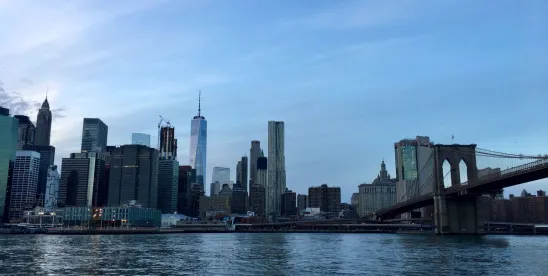Relying mostly on draft guidance, New York is requiring immediate compliance with its Climate Leadership and Community Protection Act (CLCPA) (passed in June 2019), even while regulatory steps mandated under the climate legislation remain unfinished. Thus far, at least one court has embraced the State’s position.
The New York State Department of Environmental Conservation (NYSDEC) has issued several decisions denying permit applications, even for a renewal, based on CLCPA requirements, reinforcing the importance of establishing a strong record to support a finding of consistency with greenhouse gas emission limits under Section 7(2) of the law. And while NYSDEC has not yet finalized the criteria for identifying disadvantaged communities (DACs) under Section 7(3), the agency—at least in some regions—requires permit applicants to evaluate burdens on the proposed DACs.
Implementation of the CLCPA
Section 7(2) of the CLCPA requires NYSDEC to determine whether permit issuance is inconsistent with or would interfere with the attainment of statewide greenhouse gas emissions limits. If inconsistent, NYSDEC must offer a statement of justification as to why the limits may not be met and identify alternatives or greenhouse gas mitigation measures. Section 7(3) requires NYSDEC to ensure the permit will not disproportionately burden DACs. NYSDEC has not yet issued any final regulations or guidance implementing these CLCPA provisions; all guidance is currently in draft form.
In December 2021, NYSDEC issued draft Commissioner Policy (CP)-49, Climate Change, and DEC Action. Draft CP-49 confirms that the CLCPA applies to air permits, solid waste management permits, and certain other major permit applications—including for renewals and modifications—as well as to projects involving the construction of energy production, generation, transmission, or storage facilities and permits for sources or activities that directly or indirectly result in greenhouse gas emissions. Before finalization of the Climate Action Council’s Scoping Plan, which will provide a framework for reducing greenhouse gas emissions in New York, a permit applicant must (according to draft CP-49) demonstrate compliance with existing emission limits at 6 NYCRR Part 496. Routine permit renewals that do not increase actual or potential greenhouse gas emissions are ordinarily considered consistent with the CLCPA during this interim period.
Draft guidance DAR-21 addresses the application of Section 7(2) to Title V and other air permits, describing the required analysis of direct, indirect, downstream, and upstream greenhouse gas emissions to support a consistency determination.
To implement Section 7(3), New York has issued draft criteria to identify DACs. Under the draft criteria, the proposed DACs are identified based on a broad range of indicators, including climate-related risks, health vulnerabilities, and socio-economic conditions. Thirty-five percent of census tracts in New York have been proposed as DACs (map available here).
NYSDEC has also stated that a forthcoming revision to CP-29, DEC Policy on Environmental Justice and Permitting will provide guidance on implementing Section 7(3). CP-29 provides guidance for incorporating environmental justice concerns into the permit review process. Specifically, where a permitting decision may adversely impact a potential environmental justice area (map available here), a permit applicant must provide public input into the permit review process by developing a public participation plan.
Permit Denials Under the CLCPA
Even though the regulatory framework for the CLCPA is still under development, NYSDEC is requiring that permit applicants comply with Sections 7(2) and 7(3) during the review process. And where they do not, NYSDEC uses the CLCPA as grounds to deny the permit.
The agency recently denied a Title V renewal application for a 107-megawatt natural gas-fired electric generating facility on CLCPA grounds. Relying on a trial court opinion that upheld the denial of Title V permit under the CLCPA, NYSDEC explained that renewal of a Title V air permit for an existing facility does not relieve the applicant or agency “from the obligation to comply with CLCPA Section 7(2).”
NYSDEC determined that the renewal application would be inconsistent with the attainment of greenhouse gas emission limits required by Section 7(2) because, among other factors, the facility’s emission rates increased significantly (and would continue to increase) since initial permit issuance. NYSDEC also explained that the facility had not provided sufficient justification or mitigation to allow permit renewal issuance. As to Section 7(3)’s DAC analysis, NYSDEC stated that the proposed DACs may be used in assessing burdens from a facility’s operations. Because the permit applicant had not specifically addressed potential impacts from its operations on nearby proposed DACs, NYSDEC concluded it could not ensure compliance with Section 7(3).







 />i
/>i

